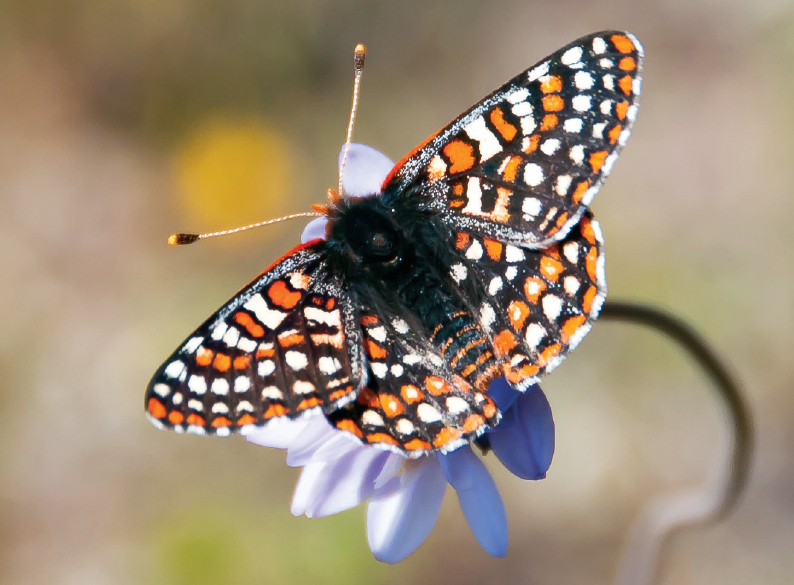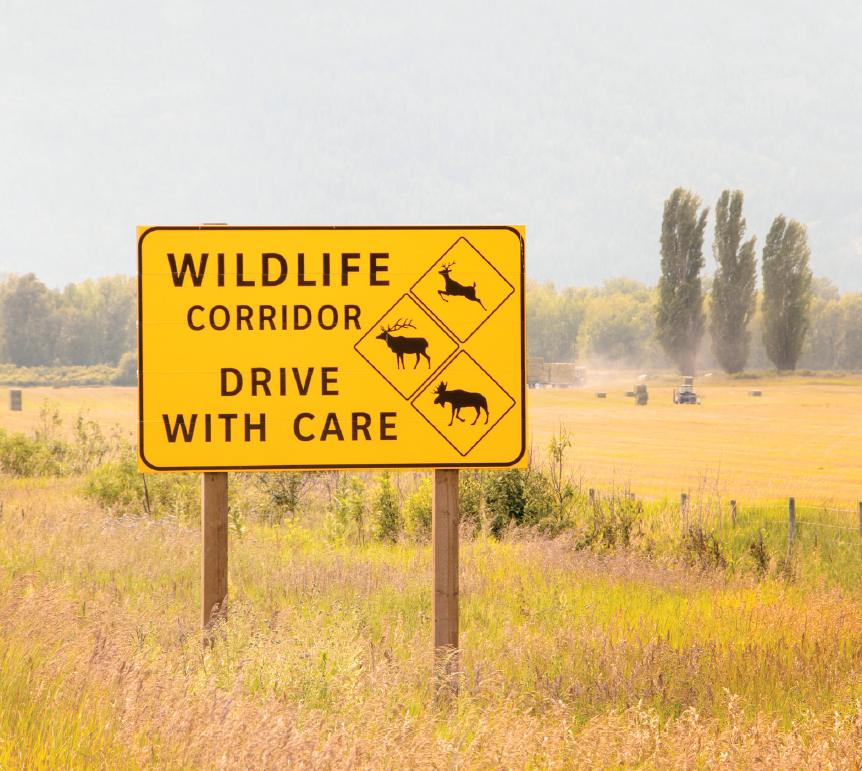2 Sustaining Ecosystems in the Face of Climate Change
Numerous approaches are being considered for sustaining ecosystems in the face of climate change. One option is to strengthen the natural ability of ecosystems to withstand or recover from (or be resilient to) pressures, or to adjust to new environmental conditions. For example, intact, extensive, and connected ecosystems have better prospects for resilience than do degraded ecosystems. Ecosystems that are generally healthy, with high (or intact) species diversity, are better able to naturally adapt to changes in their environment. For these reasons, many efforts to address current or anticipated climate impacts on ecosystems focus initially on traditional approaches to ecosystem conservation and restoration.
Increasingly, however, ecosystems’ natural resiliencies are insufficient. The climate is changing more quickly than the ecosystems can. This situation is exacerbated when ecosystems are already degraded, in which case their natural adaptive capacity is compromised. In these cases, novel conservation measures are being considered to augment traditional approaches.25 Many factors must be considered in determining the best strategy for sustaining ecosystems. Likewise, a diverse set of decision makers and stakeholders (e.g., ecosystem managers; local, state, federal, and international policy makers; and scientists) must be involved in the implementation of conservation practices.
ROLE OF ESTABLISHED CONSERVATION PRACTICES IN CLIMATE ADAPTATION
The primary conservation strategies used to date have been in situ, meaning that actions are taken where the ecosystem is located. These approaches include ecosystem protection, establishment of reserves, and managing populations of target species within their existing ranges.
___________________
25 Bennett, E. M., M. Solan, R. Biggs, T. McPhearson, A. V Norström, P. Olsson, L. Pereira, G. D. Peterson, C. Raudsepp-Hearne, F. Biermann, S. R. Carpenter, E. C. Ellis, T. Hichert, V. Galaz, M. Lahsen, M. Milkoreit, B. Martin-López, K. A. Nicholas, R. Preiser, G. Vince, J. M. Vervoort, and J. Xu. 2016. Bright spots: seeds of a good Anthropocene. Frontiers in Ecology and the Environment 14(8):441-448.
Studies have shown that implementing conservation on large scales is most effective. Greater ecosystem resilience to climate change is often conferred by large areas of intact and high-quality habitat, large species populations, high levels of reproduction, and connections among populations, which make in situ approaches an effective strategy in many instances. For marine ecosystems, one study suggested that protection of 30-50% of the ocean is needed to achieve biodiversity conservation, ecosystem connectivity, support for fisheries adjacent to protected areas, and other objectives.26 Protected areas can also be a particularly powerful tool to rebuild depleted populations and to retain and repair habitats that have been degraded by climate change. In addition, designing a network of wildlife areas across a fragmented landscape could allow for easier movement of individuals, thereby helping them expand their range to accommodate changing climate conditions. For example, in California, the Quino checkerspot butterfly has exhibited resilience to climate change,27 which is likely due to the protection of undeveloped land within both the traditional and expanding ranges of the butterflies. Such protection provided the butterflies several options for adjusting naturally to climate change.

“An immediate challenge is to characterize and separate the response of species and communities to periodic, stochastic, and/or cyclical natural variations from change imposed by long-term climatic forcing.”
—MARTIN SOLAN, University of Southampton
___________________
26 O’Leary, B. C., M. Winther-Janson, J. M. Bainbridge, J. Aitken, J. P. Hawkins, and C. M. Roberts. 2016. Effective coverage targets for ocean protection. Conservation Letters 9(6):398-404.
27 Parmesan, C., A. Williams-Anderson, M. Moskwik, A. S. Mikheyev, and M. C. Singer. 2015. Endangered Quino checkerspot butterfly and climate change: Short-term success but long-term vulnerability? Journal of Insect Conservation 19(2):185-204. DOI: 10.1007/s10841-014-9743-4.
Some forum participants noted that other conservation strategies being used with increased frequency to address climate stresses on ecosystems include those that are ex situ and trans situ. Ex situ involves preserving biodiversity outside the naturally occurring ecosystem, for example in zoos, botanical gardens, and gene or seed banks. Trans situ includes the facilitated movement of species to new locations through such means as stepping stones, corridors, or physically moving organisms from one location to another. Ex situ and trans situ approaches are often used in concert with in situ approaches, as part of a holistic strategy to conserve a particular ecosystem or species.
Although conservation ethics and policies have largely discouraged facilitating movement of species to new location, these sorts of strategies may become increasingly important under a changing climate. For example, sustaining particular ecosystem services in a particular location may require plant or animal species with specific functional traits. If the species endemic to the area are severely endangered by changing local climate conditions, it may make sense to consider introducing exotic species with similar functional traits

into the ecosystem. One specific example is the case of several species of small-range water beetles whose distribution falls outside protected areas in the Iberian Peninsula.28 Because water beetles are good surrogates of inland water biodiversity, managers might consider moving them to similar habitats in other areas of Europe (e.g., Pyrenees Mountains, Wales). However, such a strategy has not been implemented. Policy makers tend to view this as an issue for Spain to address given that these particular species of water beetles are endemic to the Iberian Peninsula.
ROLE OF GENETICS IN CLIMATE ADAPTATION
Adaptation occurs naturally within ecosystems when a species or interacting community of species can change sufficiently in response to an environmental change to cope with it. It can involve change within individuals and species, or changes in the composition of the community that still result in essential ecosystem attributes remaining intact. In general, the capacity to adapt is higher in healthy and intact ecosystems when compared to degraded or fragmented ones. Functional trait diversity—defined as the value, range, distribution, and relative abundance of the functional traits collectively present among organisms in a given ecosystem—can also facilitate adaptation when new recruits into an ecosystem (even if a different species) have similar functional traits to those that may be declining or lost.29
Some scientists are beginning to explore options for genetically modifying organisms to be more resistant to climate change impacts (see Box 2 for potential examples for coral reef ecosystems) or hybridizing native and invasive species. These approaches could promote the adaptive capacity of species that are under significant stress.
___________________
28 Sánchez-Fernández, D., D. T. Bilton, P. Abellán, I. Ribera, J. Velasco, and A. Millán. 2008. Are the endemic water beetles of the Iberian Peninsula and the Balearic Islands effectively protected? Biological Conservation 141(6):1612-1627. DOI: 10.1016/j.biocon.2008.04.005.
29 Díaz, S., S. Lavorel, F. de Bello, F. Quétier, K. Grigulis, and T. M. Robson. 2007. Incorporating plant functional diversity effects in ecosystem service assessments. Proceedings of the National Academy of Sciences of the United States of America 104(52):20684-20689. DOI: 10.1073/pnas.0704716104.
NEW CONSERVATION CHALLENGES IN A CHANGING CLIMATE
As ecosystems are increasingly stressed by climate change, ecosystem managers are facing new challenges in designing conservation strategies. For example, the primary objectives of a management plan could focus on individual species or the ecosystem a as a whole. If the primary objective is to keep the building blocks of biodiversity intact, it may be necessary to concentrate on species that are globally endangered rather than trying to maintain populations of organisms that could be significant locally but are not globally threatened. For climate adaptation, there are also outstanding research questions related to how scientists can identify species that may be unlikely to adapt naturally and whether trying to conserve them should be a priority, while recognizing their importance under other contexts.
Where particular ecosystems provide valuable ecosystem services, it might be advantageous to allow ecosystem change through shifts in species ranges, species composition, and even evolution. Alternatively, assisted transformation of species—for example, through genetic engineering or hybridization between native and invasive species—may allow ecosystems or species to be retained where they might otherwise be degraded or lost as a result of climate change. These types of actions can be controversial, however. For example, if a forest is drying out, should ecosystem managers allow species of dry forest trees to invade at the expense of established native species? Or should the forest be allowed to shift toward a more open, savanna-like biome? Additionally, if ecosystem managers and policy makers deem range expansion an appropriate management strategy, then cooperation across national or other borders may be needed, which could prove challenging if different groups or nations have differing objectives or priorities. This becomes more complicated in the oceans, where ranges can include international waters or cross transition zones (e.g., land to sea) where multiple authorities can have jurisdiction.
Finally, given that climate change is a global threat and many ecosystem types cover vast areas, the feasibility of implementing climate adaptation and conservation efforts at scales that can maximize ecosystem health and services is challenging, and risks associated with these practices at scale are understudied. At the same time, costs of implementation can be very high, even at small scales, and the objectives of one intervention in one part of an ecosystem may conflict with the objectives of another intervention in another part of the ecosystem. As such, it is important for the science community and decision makers to evaluate the balance between ecosystems services provided relative to the costs of management to make informed decisions about implementation.






